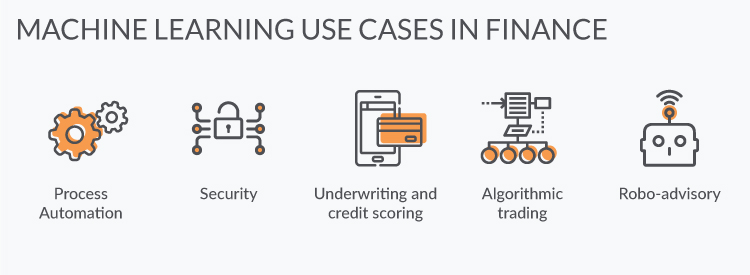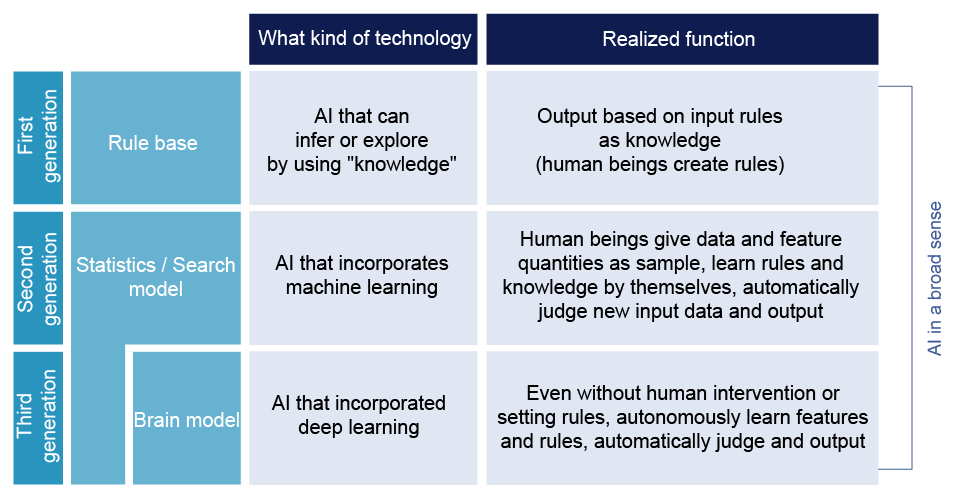
Machine learning videogames are becoming more popular due to their many benefits, including improved performance. "Simon's Clash," a game recently released, uses AI to automatically identify "lost players" and retry it. However, the technique is not as effective than some researchers thought. One explanation for the low performance may be due to the ambiguity of the word "lost" or the complexity of the game.
Artificial Neural Networks
Artificial Neural Networks used in video games are an example how deep learning algorithms can improve e-sports AI. Machine learning algorithms can be developed using data from the videogame industry. DeepMind, for example, has used video games to develop AI systems that can defeat e-sports pros. Researchers can use machine learning algorithms to improve their performance in video games.
The learning process is very different for curiosity-driven and extrinsically-motivated neural networks. Curiosity-driven neural networks learn by analyzing what the player does and the outcomes of that action. They learn how to predict the future, which reduces prediction errors. In this way, they are more efficient than extrinsically-motivated neural networks. AI is now used in videogames in many different ways.

Genetic algorithms
The use of genetic algorithms has been made possible by the advancement of artificial intelligence. These algorithms employ a series of steps to solve problems, including selection and mutation. These algorithms can also be applied to economics, multimodal optimization and aircraft design. This article will provide a general overview of how these algorithms work and some of their limitations. Let's examine the role genetic algorithms play in machine-learning video games.
The fitness function is an important parameter. The solution will be more effective if the fitness score is higher than the others. The algorithm also needs to calculate the distance between the solutions. This is done by using current positions of objects. In order to determine a fitness function, the user must first define it. It's important for users to understand that fitness values will be used to measure the success of a solution. The user can make the best decision by using a fitness function.
N-grams
Researchers are increasingly using N-grams to train computer game algorithms. N-gram models differ from standard machine learning techniques because they only require a small amount of data. To train ngram models, researchers first need to convert levels in strings. The strings are then converted to vertical slices. Each slice can be repeated several times. The model calculates a conditional probability for each character.
For text data, the concept of ngrams was created. Grayscale can be defined as any range of values between zero and 255. This is equivalent to a dictionary that contains 256 words. There are as many as 256n possible n-grams in a given text. In contrast, high-dimensional data is prone to information redundancy, noise, and dimensional disasters. N-grams serve as prefix searching and for the implementation of a "search-as_you-type" system.

Training data
It is difficult to develop new AI techniques in video games. This requires extensive training data. While game developers can use their own data to build models of player behavior, machine learning techniques are particularly effective in learning from video game training examples. Game developers can analyze game data to create systems that can learn from a variety of scenarios and play games with varying difficulty. Additionally, developers can use machine learning techniques to design their games.
Creating an AI model is similar to writing a program that plays chess. Machine learning however is at a higher degree. Instead of relying on real-world data, machine learning techniques can be trained on synthetic data. By creating a virtual environment that allows players to interact with the AI, developers can create an experience that is more realistic. The game data will be used to train the machine and help it make better decision.
FAQ
What do you think AI will do for your job?
AI will take out certain jobs. This includes drivers, taxi drivers as well as cashiers and workers in fast food restaurants.
AI will create new jobs. This includes data scientists, project managers, data analysts, product designers, marketing specialists, and business analysts.
AI will make your current job easier. This includes doctors, lawyers, accountants, teachers, nurses and engineers.
AI will improve efficiency in existing jobs. This includes agents and sales reps, as well customer support representatives and call center agents.
Which are some examples for AI applications?
AI is used in many fields, including finance and healthcare, manufacturing, transport, energy, education, law enforcement, defense, and government. These are just a few of the many examples.
-
Finance - AI has already helped banks detect fraud. AI can identify suspicious activity by scanning millions of transactions daily.
-
Healthcare - AI is used to diagnose diseases, spot cancerous cells, and recommend treatments.
-
Manufacturing – Artificial Intelligence is used in factories for efficiency improvements and cost reductions.
-
Transportation - Self-driving cars have been tested successfully in California. They are currently being tested around the globe.
-
Utility companies use AI to monitor energy usage patterns.
-
Education – AI is being used to educate. Students can interact with robots by using their smartphones.
-
Government - AI is being used within governments to help track terrorists, criminals, and missing people.
-
Law Enforcement – AI is being used in police investigations. Detectives can search databases containing thousands of hours of CCTV footage.
-
Defense - AI can be used offensively or defensively. In order to hack into enemy computer systems, AI systems could be used offensively. Protect military bases from cyber attacks with AI.
Who is leading today's AI market
Artificial Intelligence is a branch of computer science that studies the creation of intelligent machines capable of performing tasks normally performed by humans. It includes speech recognition and translation, visual perception, natural language process, reasoning, planning, learning and decision-making.
Today there are many types and varieties of artificial intelligence technologies.
It has been argued that AI cannot ever fully understand the thoughts of humans. Deep learning technology has allowed for the creation of programs that can do specific tasks.
Google's DeepMind unit, one of the largest developers of AI software in the world, is today. It was founded in 2010 by Demis Hassabis, previously the head of neuroscience at University College London. DeepMind, an organization that aims to match professional Go players, created AlphaGo.
What does AI do?
An algorithm refers to a set of instructions that tells computers how to solve problems. A sequence of steps can be used to express an algorithm. Each step has a condition that dictates when it should be executed. A computer executes each instructions sequentially until all conditions can be met. This continues until the final results are achieved.
Let's take, for example, the square root of 5. You could write down every single number between 1 and 10, calculate the square root for each one, and then take the average. It's not practical. Instead, write the following formula.
sqrt(x) x^0.5
This is how to square the input, then divide it by 2 and multiply by 0.5.
This is the same way a computer works. It takes your input, multiplies it with 0.5, divides it again, subtracts 1 then outputs the result.
How does AI impact the workplace?
It will change how we work. We will be able to automate routine jobs and allow employees the freedom to focus on higher value activities.
It will improve customer services and enable businesses to deliver better products.
It will help us predict future trends and potential opportunities.
It will help organizations gain a competitive edge against their competitors.
Companies that fail to adopt AI will fall behind.
AI is good or bad?
AI is seen both positively and negatively. The positive side is that AI makes it possible to complete tasks faster than ever. Programming programs that can perform word processing and spreadsheets is now much easier than ever. Instead, we ask our computers for these functions.
On the other side, many fear that AI could eventually replace humans. Many people believe that robots will become more intelligent than their creators. This means that they may start taking over jobs.
How does AI work?
An artificial neural network is made up of many simple processors called neurons. Each neuron takes inputs from other neurons, and then uses mathematical operations to process them.
The layers of neurons are called layers. Each layer performs a different function. The first layer receives raw data, such as sounds and images. These data are passed to the next layer. The next layer then processes them further. Finally, the last layer produces an output.
Each neuron also has a weighting number. This value is multiplied when new input arrives and added to all other values. If the number is greater than zero then the neuron activates. It sends a signal to the next neuron telling them what to do.
This is repeated until the network ends. The final results will be obtained.
Statistics
- While all of it is still what seems like a far way off, the future of this technology presents a Catch-22, able to solve the world's problems and likely to power all the A.I. systems on earth, but also incredibly dangerous in the wrong hands. (forbes.com)
- A 2021 Pew Research survey revealed that 37 percent of respondents who are more concerned than excited about AI had concerns including job loss, privacy, and AI's potential to “surpass human skills.” (builtin.com)
- According to the company's website, more than 800 financial firms use AlphaSense, including some Fortune 500 corporations. (builtin.com)
- The company's AI team trained an image recognition model to 85 percent accuracy using billions of public Instagram photos tagged with hashtags. (builtin.com)
- In 2019, AI adoption among large companies increased by 47% compared to 2018, according to the latest Artificial IntelligenceIndex report. (marsner.com)
External Links
How To
How to make Alexa talk while charging
Alexa, Amazon’s virtual assistant is capable of answering questions, providing information, playing music, controlling smart-home devices and many other functions. And it can even hear you while you sleep -- all without having to pick up your phone!
With Alexa, you can ask her anything -- just say "Alexa" followed by a question. She'll respond in real-time with spoken responses that are easy to understand. Alexa will improve and learn over time. You can ask Alexa questions and receive new answers everytime.
You can also control connected devices such as lights, thermostats locks, cameras and more.
You can also tell Alexa to turn off the lights, adjust the temperature, check the game score, order a pizza, or even play your favorite song.
Setting up Alexa to Talk While Charging
-
Open Alexa App. Tap Settings.
-
Tap Advanced settings.
-
Select Speech recognition.
-
Select Yes, always listen.
-
Select Yes, wake word only.
-
Select Yes, and use a microphone.
-
Select No, do not use a mic.
-
Step 2. Set Up Your Voice Profile.
-
Select a name and describe what you want to say about your voice.
-
Step 3. Step 3.
Say "Alexa" followed by a command.
Example: "Alexa, good Morning!"
Alexa will reply if she understands what you are asking. Example: "Good morning John Smith!"
Alexa will not respond to your request if you don't understand it.
-
Step 4. Restart Alexa if Needed.
After these modifications are made, you can restart the device if required.
Notice: You may have to restart your device if you make changes in the speech recognition language.